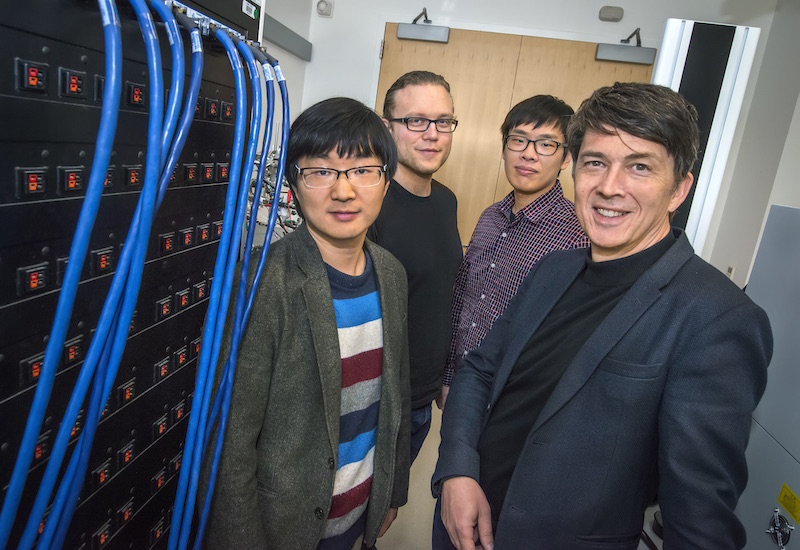New Path Forward for Next-Generation Li-ion Batteries
News Release (510) 486-6491 • MAY 30, 2016

A new study by Berkeley Lab researchers Dong-Hwa Seo, Alex Urban, Jinhyuk Lee, and Gerd Ceder (from left) sheds light on how lithium-rich cathodes work, opening the door to higher capacity batteries. (Credit: Roy Kaltschmidt/Berkeley Lab)
In the quest for a radically better lithium-ion battery, a promising direction is the so-called “lithium-rich” cathode, in which the cathode contains a higher proportion of lithium than normal. While it has the potential to have far higher energy density, scientists have lacked a clear picture of the chemical processes, especially the role of oxygen.
Now researchers at the Department of Energy’s (DOE) Lawrence Berkeley National Laboratory (Berkeley Lab) report a major advance in understanding how oxygen oxidation creates extra capacity in such cathodes, opening the door to batteries with far higher energy density.
Read more online here: http://newscenter.lbl.gov/2016/05/30/new-path-forward-next-generation-lithium-ion-batteries/
And find the paper, published online in Nature Chemistry, here: http://dx.doi.org/10.1038/nchem.2524
